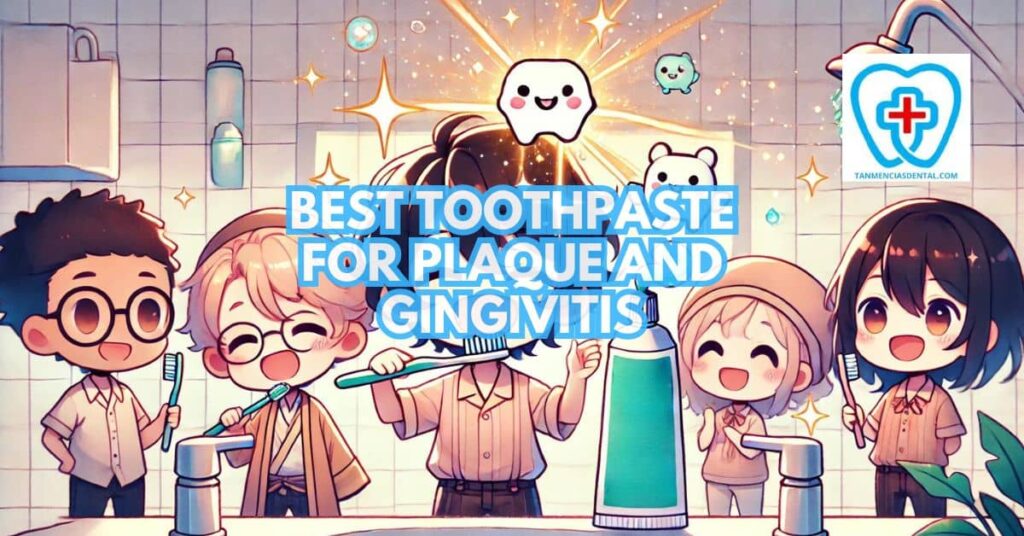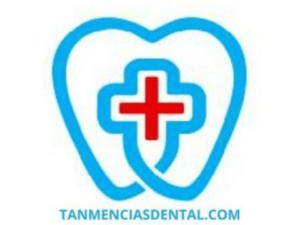Choosing the best toothpaste for plaque and gingivitis is an important step in keeping your mouth healthy.
Plaque is a sticky layer of bacteria that can lead to gum inflammation if not controlled with daily cleaning.
Toothpaste works by removing food particles, fighting harmful bacteria, and strengthening enamel against decay.
Different formulas use ingredients such as fluoride, zinc, and natural extracts to target specific oral health needs.
We’ll explain how to find the best toothpaste for plaque and gingivitis while also highlighting other habits that support strong teeth and gums.
1. Plaque and Gingivitis: Understanding the Foes of Your Smile
Plaque is a sticky film of bacteria that forms on your teeth and gums after eating and drinking.
If plaque is not removed through regular brushing and flossing, it can harden into tartar, which is harder to clean.
Gingivitis is the inflammation of the gums caused by plaque buildup, leading to redness, swelling, and bleeding.
Without treatment, gingivitis can progress to periodontitis, a more severe form of gum disease.
Understanding these oral health issues is crucial to choosing the right toothpaste to keep your smile healthy.
🦷 Brushing with Confidence: Are Electric Toothbrushes Safe for Kids and Adults?
2. Brushing Away the Threat: Why Toothpaste Matters
Toothpaste plays a vital role in maintaining oral hygiene and preventing dental problems.
It helps remove food particles and bacteria, which are the primary causes of plaque and gingivitis.
The fluoride in toothpaste strengthens tooth enamel, making it more resistant to decay.
Toothpaste also freshens breath and can provide additional benefits, like whitening teeth.
Selecting a toothpaste that targets your specific needs can significantly enhance your oral health routine.
🦷 Can Electric Toothbrushes Damage Fillings? Brushing for a Smile, Not a Disaster
3. Weaponizing Your Brush: Key Ingredients to Fight Back
Effective toothpastes contain active ingredients designed to combat plaque and gingivitis.
Fluoride is a common ingredient that helps prevent cavities and strengthen enamel.
Triclosan is an antibacterial agent that can reduce gum inflammation and plaque.
Zinc citrate helps control plaque and tartar buildup.
Knowing these ingredients and their benefits allows you to choose a toothpaste that offers comprehensive protection for your teeth and gums.
🦷 Brushing BFF or Brushing Blocker? The Truth About Mouthwash Before Brushing Teeth
4. Understanding Abrasivity and RDA Levels
Relative Dentin Abrasivity (RDA) measures how much a toothpaste can wear away enamel and dentin.
A low RDA level means the toothpaste is gentle on teeth and safe for daily use.
Toothpaste with very high RDA levels may effectively clean stains but can slowly damage enamel and cause sore gums.
Most dentists recommend using toothpaste with an RDA level that is effective yet not harsh.
Knowing about RDA helps you choose a toothpaste that balances stain removal with long-term tooth and gum protection.
🦷 Why Understanding Dentist Vs Oral Surgeon Roles Matters for Your Oral Health

5. Fluoride: Friend or Foe? Considerations for Sensitive Smiles
Fluoride is well known for its ability to prevent cavities and strengthen tooth enamel.
However, for some people, especially those with sensitive teeth, fluoride can cause discomfort.
Sensitive teeth might react to fluoride with pain or irritation.
For individuals with this issue, there are fluoride-free toothpastes or those with lower fluoride content that can be effective alternatives.
It’s important to consult with your dentist to find the best option that balances cavity prevention and sensitivity management.
🦷 Is Your Smile Worth It? Why Dental Care Is So Expensive
6. Natural Options: Exploring Earth-Friendly Alternatives
Natural toothpastes use ingredients like tea tree oil, aloe vera, and baking soda to fight plaque and gingivitis.
These products avoid synthetic chemicals and are often biodegradable, making them a good choice for eco-conscious consumers.
Natural toothpastes can be just as effective as traditional ones in maintaining oral health.
They also tend to have fewer artificial flavors and preservatives, which can be beneficial for people with allergies or sensitivities.
Exploring these options provides an alternative for those looking to maintain a natural and environmentally friendly oral hygiene routine.
🦷 Does Salt Water Help With Gingivitis? The Salty Truth About Gum Relief
7. Brushing Technique: Mastering the Art of Plaque Removal
Using the correct brushing technique is crucial for effectively removing plaque and preventing gingivitis.
It is recommended to use a soft-bristle brush and hold it at a 45-degree angle to your gums.
Brush in gentle, circular motions, ensuring you clean all surfaces of your teeth.
Spend at least two minutes brushing, and don’t forget to brush your tongue to remove bacteria and freshen your breath.
Mastering these techniques maximizes the benefits of your toothpaste and helps maintain optimal oral health.
🦷 Can You Drink Sparkling Water After Brushing Your Teeth?
8. When Brushing Isn’t Enough: Recognizing the Need for a Dentist
While brushing and flossing are essential, they may not be enough to maintain oral health alone.
Regular dental checkups are necessary to catch early signs of plaque buildup and gingivitis.
Professional cleanings remove tartar that brushing cannot eliminate, preventing the progression of gum disease.
Dentists can also provide personalized advice on oral hygiene practices and recommend specific products based on your needs.
Recognizing the importance of these visits helps you keep your mouth healthy and prevent serious dental issues.
🦷 Why Be a Dental Assistant? It’s More Than Just Smiles!
9. Beyond Brushing: The Importance of Flossing and Mouthwash
In addition to brushing, flossing, and using mouthwash, these are critical components of an effective oral hygiene routine.
Flossing removes plaque and food particles from areas that a toothbrush can’t reach, such as between the teeth and under the gumline.
Mouthwash helps reduce bacteria, freshens breath, and can offer additional protection against plaque and gingivitis.
Look for mouthwashes with antibacterial properties and fluoride for extra cavity protection.
Incorporating these practices into your daily routine ensures a more comprehensive approach to oral health.
🦷 How Smile Correction Can Transform Your Confidence and Appearance
10. Finding Your Perfect Match: Consulting Your Dentist for Toothpaste Advice
Consulting your dentist can help you find the most suitable toothpaste for your specific oral health needs.
Dentists can provide recommendations based on your dental history, current conditions, and personal preferences.
They might suggest toothpaste with specific ingredients that target issues like sensitivity, plaque, or gingivitis.
Regular consultations ensure that you’re using the most effective products and techniques.
This personalized advice can make a significant difference in maintaining your oral health.
🦷 Basic Dental Needs in Marikina
11. The Power is in Your Hands (and Brush): Taking Charge of Your Oral Health
Taking charge of your oral health involves more than just choosing the right toothpaste; it requires a consistent and thorough hygiene routine.
Use a high-quality toothbrush and replace it every three to four months.
Brush twice a day, floss daily, and consider using mouthwash to enhance your efforts.
Regular dental checkups and cleanings are also essential.
By being proactive and disciplined, you can significantly reduce the risk of plaque and gingivitis, ensuring a healthier smile.
🦷 Marikina City Dental and Oral Care Specialists
👨⚕️ Conclusion
Selecting the best toothpaste for plaque and gingivitis involves understanding your oral health needs and the ingredients that effectively address these issues.
Toothpastes with fluoride, triclosan, and zinc citrate can provide a strong defense against plaque and gum disease.
For those with sensitivities, natural or lower-fluoride options are available.
Regular brushing, flossing, and dental visits complete your oral care routine.
With the right toothpaste and habits, you can maintain a healthy, vibrant smile free from plaque and gingivitis.
😊 Self-Promotion
Visit Tan-Mencias Dental Clinic in Parang, Marikina City, for top-quality dental care in a friendly and welcoming environment.
Our experienced team is here to help you achieve your best smile with personalized and compassionate service.
Have questions or need to book an appointment?
You can easily reach us by calling 9171451074, sending a message through our Facebook page, or utilizing the contact form on our website.
We look forward to seeing you and taking care of your dental health!
❔ FAQs
1. How do I know if my toothpaste is too abrasive?
Most toothpaste tubes do not list the RDA score, but you can look it up on the brand’s website or ask your dentist for guidance.
A toothpaste with a very high RDA may remove stains quickly but can slowly damage enamel.
If your teeth feel sensitive after brushing, it may be a sign to switch to a gentler formula.
2. Can I prevent gingivitis with toothpaste alone?
Toothpaste is an important tool, but it cannot fully protect your gums by itself.
You also need to brush twice daily with the right technique, floss every day, and visit your dentist for cleanings.
A complete routine is the best way to stop gingivitis from developing.
3. What ingredients should I look for in the best toothpaste for plaque and gingivitis?
Fluoride helps strengthen enamel and prevent cavities.
Zinc and triclosan reduce bacteria and plaque.
Some natural options use baking soda, aloe vera, or tea tree oil, which can also support gum health.
4. Is natural toothpaste as effective as regular toothpaste?
Many natural toothpastes are effective if they contain proven cleaning and antibacterial ingredients.
Look for products that are tested and approved by dental organizations.
The choice often depends on personal preference, allergies, or sensitivity to artificial additives.
5. How often should I change my toothpaste brand or type?
There is no strict rule, but switching may help if your dental needs change.
For example, you might move from a whitening toothpaste to a sensitivity formula.
Ask your dentist during checkups if your current toothpaste is still the best fit for your teeth and gums.

